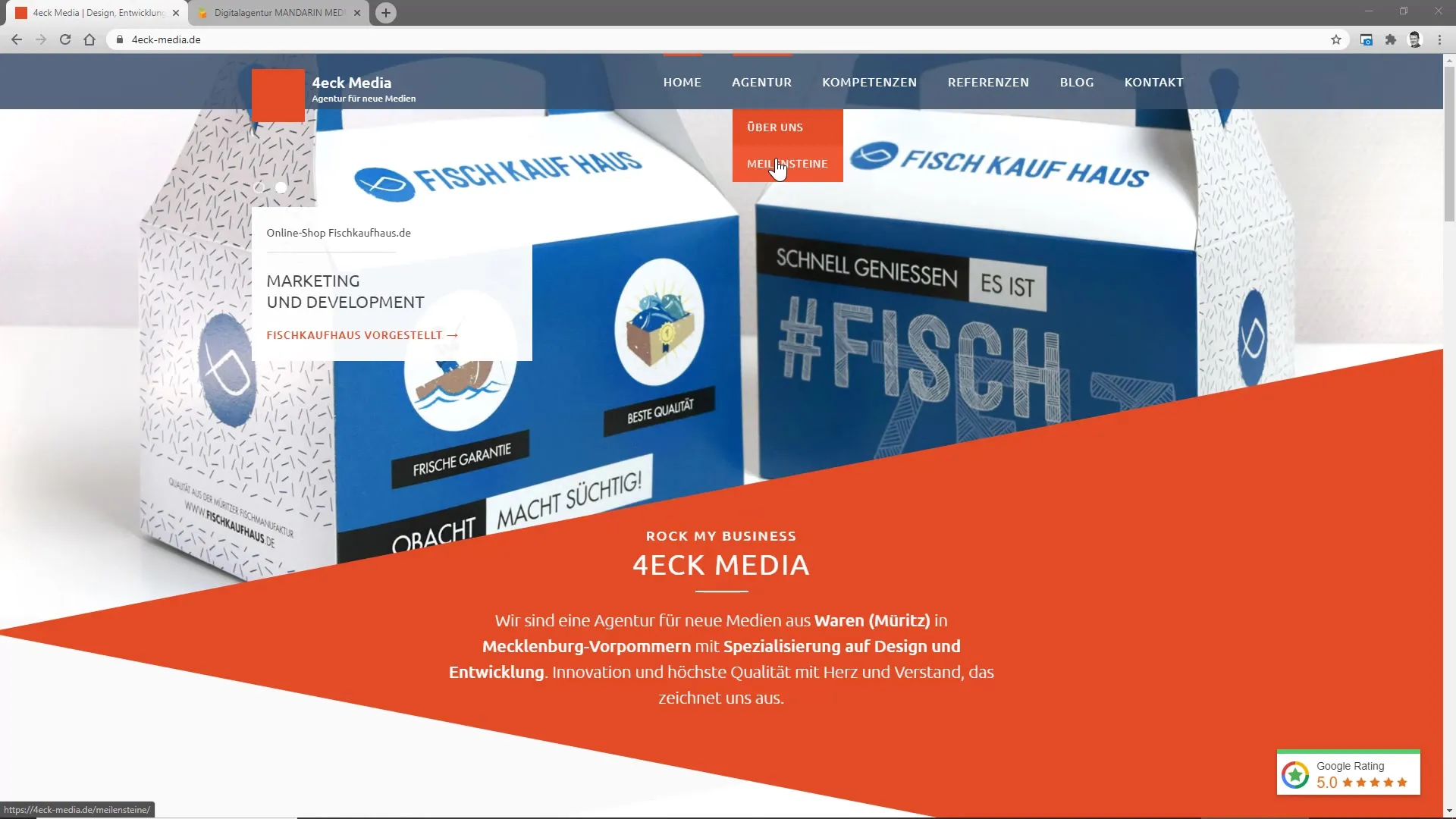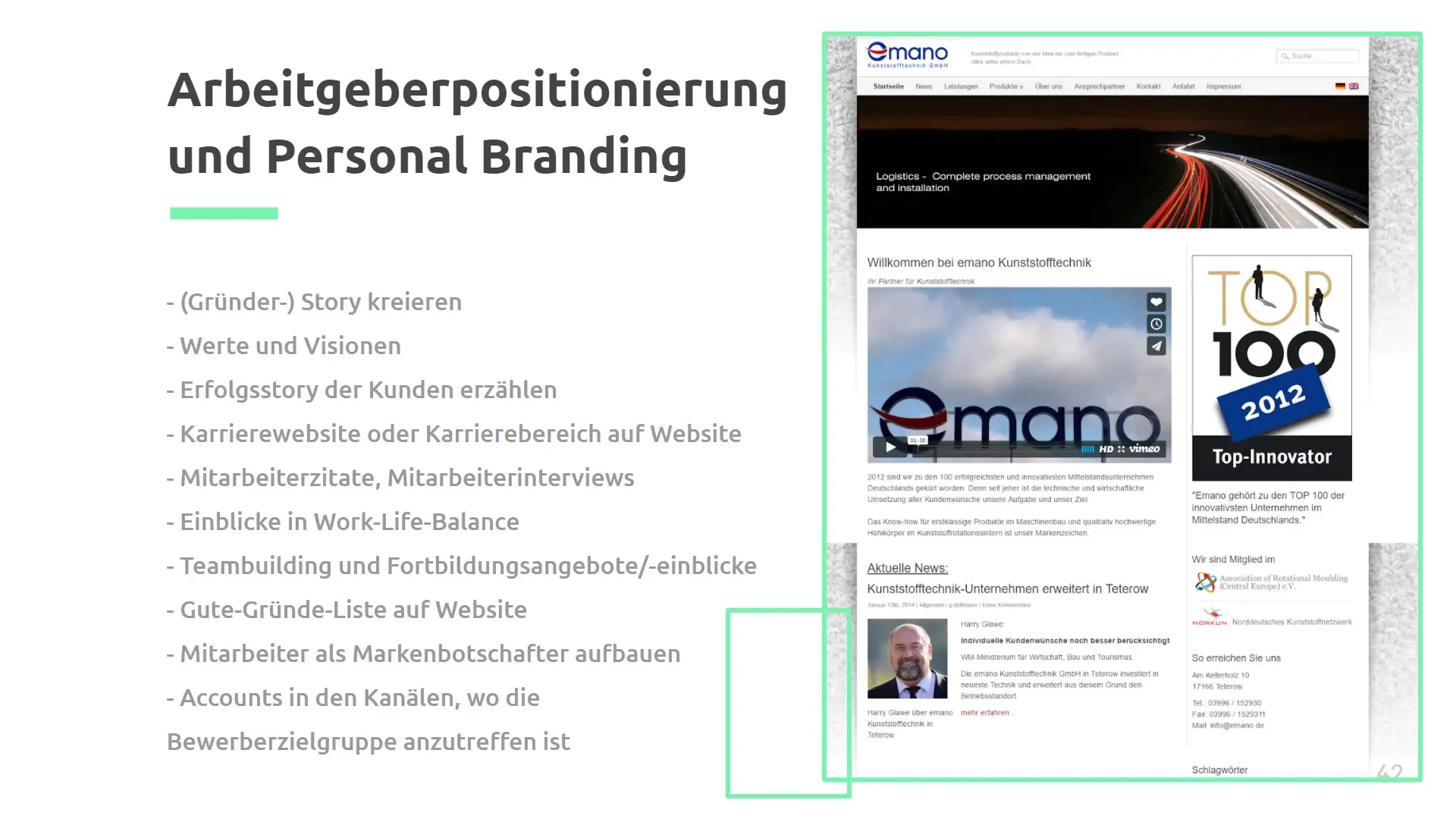The positioning as an attractive employer is crucial in today's job market. The need to find and retain qualified talent is steadily increasing. Therefore, it is of great importance that you clearly articulate and communicate your employer brand. In this guide, you will learn how to increase your employer attractiveness and build a strong Employer Brand.
Key insights
- Employees are central to corporate culture and business success.
- Positioning as an employer requires an authentic and targeted communication strategy.
- Utilizing platforms like Kununu for review management is essential.
- Storytelling is a powerful tool for creating an emotional connection with potential employees.
Step-by-Step Guide
Step 1: Define the Employer Brand
To create a strong employer brand, you must first clearly define your company's values and vision. What makes your company special? What culture do you foster? Consider what stories and values you would like to communicate. Storytelling is a powerful tool to illustrate your vision and the values of your company. Ensure that these stories are authentic and relatable. For example, if you create a video of your founder or executives, you can increase the trust of potential employees.

Step 2: Create an Engaging Career Page
A dedicated career page or a career section on your existing website should be easy to find and offer engaging content. Show what sets your company apart from others and provide information on work-life balance, team activities, and training opportunities. Include testimonials from satisfied employees to illustrate the work atmosphere and corporate culture. Ensure that the page is visually appealing and remains clear and concise in presenting information.

Step 3: Use Social Media Strategically
Social media platforms are excellent for engaging potential applicants. Use channels like LinkedIn, Xing, Facebook, and Instagram to share posts that convey your company's values and culture. You can also reach potential employees through paid advertisements. It is crucial that the content is both informative and entertaining to capture interest.

Step 4: Actively Manage Reviews
Platforms like Kununu allow you to monitor and respond to feedback about your company. Positive reviews can be a tipping point for potential applicants. Therefore, it is crucial to focus on active review management. Encourage satisfied employees to share their experiences. Ensure that your team understands the importance of positive reviews and encourage them to provide feedback, for example, after a successful project or after overcoming a challenge in the team.

Step 5: Conduct Regular Employee Surveys
To make better use of employee feedback, conduct regular surveys. Ask about satisfaction, working conditions, and potential improvements. These surveys offer you valuable insights and show your employees that their opinions are valued. Display the results, share the ideas that have been implemented, and communicate transparently what is planned next.

Step 6: Invest in Employee Appreciation
Appreciating your employees plays a key role in employee motivation and satisfaction. Focus on small gestures or special incentives to show your employees how much they mean to you. This could be books, training opportunities, or even sports activities. These gestures not only promote a positive corporate culture but also ensure that employees identify with your company.

Step 7: Actively Design the Onboarding Process
The first impression counts. Make the onboarding process as engaging as possible. Welcome new employees with a structured program that not only conveys important information about the job but also offers opportunities for team integration. A successful onboarding increases new employees' commitment to your company and creates a positive atmosphere.
Step 8: Continuously Work on Your Corporate Culture
Employees are looking for more than just a job; they are also looking for a positive and supportive corporate culture. Define what your company stands for and clearly communicate these values to your team and externally. Create an environment where employees can thrive and actively incorporate feedback into the corporate culture. Provide space for personal development opportunities and promote teamwork.
Step 9: Keep Communication Open
Regularly hold discussions with your team to gauge the pulse of the employees. Through open communication and feedback loops, you ensure that employees feel heard and that they are involved in the company's development. Active questions and suggestions for improvement create a sense of belonging and strengthen the bond with your company.
Summary - Positioning as an Employer: A Guide for Successful Employer Branding
A clear positioning as an employer is a key factor for business success. Invest time and energy in authentic storytelling, optimize your career page, use social media strategically, and engage in active review management. Foster a culture of appreciation and promote open communication to strengthen your employer brand. Through these measures, you will build a strong and attractive employer brand that attracts and retains both potential applicants and existing employees.
Frequently Asked Questions
How can I define my employer brand?Define the core values and vision of your company, and use storytelling for communication.
Why is a career page important?It ensures that interested applicants can centrally find all relevant information about the company.
How important is review management?It is crucial for monitoring employee feedback and convincing potential applicants.
How can I show employee appreciation?By providing small gifts, training opportunities, or recognitions for good performance.
When should I conduct employee surveys?Regularly, to gather current sentiments and suggestions for improvement.

